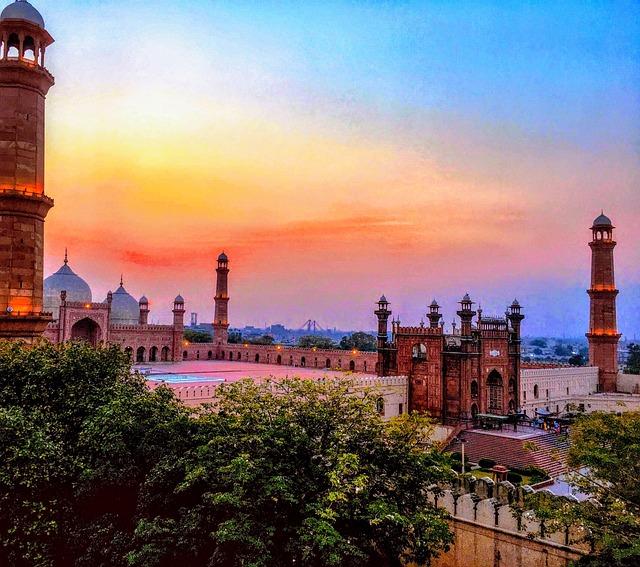Lahore, the bustling capital of Pakistan’s Punjab province, has once again found itself at the center of a public health crisis as it clinches the top spot on the global pollution index. Recent reports indicate that the city is grappling with a hazardous smog crisis, exacerbating existing environmental challenges and posing significant risks to the health of its residents. The alarming rise in air pollution levels has sparked widespread concern among health officials and environmental advocates, urging immediate action to address the pressing issue. As thick layers of smog envelop the region, the implications for daily life, health, and economic productivity become increasingly dire, calling for urgent interventions in both policy and community awareness. This article explores the factors contributing to Lahore’s pollution woes, the impact of smog on public health, and the broader environmental implications for Punjab province and beyond.
Lahore’s Air Quality Crisis Driving Health Emergency as Pollution Levels Surge
As Lahore grapples with a severe air quality crisis, alarming levels of pollution have triggered a public health emergency, prompting widespread concern among residents and health officials. The city has been recorded as one of the most polluted in the world, causing detrimental effects on respiratory health, particularly among vulnerable populations such as children and the elderly. Factors contributing to this crisis include:
- Industrial Emissions: Factories release harmful pollutants without adequate regulation.
- Vehicle Exhaust: The increasing number of vehicles exacerbates the city’s pollution levels.
- Construction Dust: Ongoing construction projects generate substantial dust and debris.
Officials are urging immediate action to mitigate this growing threat. Health experts are warning of increased cases of asthma, bronchitis, and other respiratory diseases linked to the toxic air. The government is urged to implement stricter environmental regulations and promote green initiatives. An ongoing battle against air pollution necessitates urgent measures, including:
- Public Awareness Campaigns: Educating citizens about the health risks associated with poor air quality.
- Enhanced Monitoring: Utilizing technology for real-time air quality tracking.
- Investment in Green Infrastructure: Promoting tree planting and cleaner public transport options.
| Pollution Source | Contribution to PM2.5 Levels (%) |
|---|---|
| Vehicular Emissions | 30 |
| Industrial Discharges | 25 |
| Construction Activities | 20 |
| Agricultural Burning | 15 |
| Waste Burning | 10 |
Impact of Industrial Emissions and Agricultural Practices on Punjab’s Smog Dilemma
The alarming rise in air pollution across Punjab, particularly in cities like Lahore, can be attributed to a combination of industrial emissions and agricultural practices that contribute to the region’s smog crisis. Industries such as textiles, cement production, and brick kilns emit significant amounts of particulate matter (PM) and other harmful gases. The lack of stringent regulatory enforcement allows these industries to operate with minimal oversight, exacerbating air quality issues. Additionally, during the winter months, thermal inversions trap these pollutants, worsening the hazardous conditions that envelop the urban landscape.
Simultaneously, the agricultural sector plays a critical role in the region’s environmental challenges. The practice of stubble burning remains prevalent among farmers seeking to quickly clear fields for new crops. This method releases vast quantities of carbon dioxide, carbon monoxide, and other toxic compounds into the atmosphere, severely polluting the air. The seasonal phenomenon of smog in Punjab illustrates a pressing need for community awareness and government intervention to adopt sustainable practices, such as:
- Implementing cleaner production technologies in industries
- Encouraging the use of alternative crop residue management methods
- Stricter regulations on emissions for power plants and industrial units
Efforts must be prioritized to combat the relentless cycle of pollution, ensuring a healthier environment for the residents of Punjab.
Urgent Policy Measures and Community Action Needed to Combat Lahore’s Environmental Threat
The perilous air quality in Lahore demands immediate intervention from both authorities and the community. With findings from recent studies indicating that Lahore consistently ranks among the most polluted cities globally, the implications for public health are dire. Urgent policy measures are essential to mitigate the adverse effects of hazardous smog blanketing the region. Key actions should include:
- Implementation of stricter emissions regulations for industrial sectors that contribute significantly to air pollution.
- Promotion of public transportation to reduce the number of vehicles on the road, thereby lowering traffic emissions.
- Investment in green technologies and renewable energy sources, which can significantly reduce the carbon footprint of urban areas.
- Launch of awareness campaigns to educate citizens about pollution sources and promote greener practices.
Community involvement is equally critical in this battle against environmental degradation. Local organizations and citizens can collaborate to initiate grassroots movements, fostering a collective responsibility towards cleaner air. Some initiatives that could gain traction include:
- Tree planting drives to increase green cover and absorb harmful pollutants.
- Volunteering for clean-up activities in highly polluted areas to raise awareness and reduce litter.
- Community workshops on sustainable practices that can be easily implemented at the household level.
Each effort counts in the struggle for a healthier Lahore, and both policy makers and citizens must unite to tackle this environmental crisis effectively.
Wrapping Up
As the alarming trend of hazardous pollution levels in Lahore continues to rise, it serves as a stark reminder of the urgent need for comprehensive environmental policies and effective action plans. The city’s position at the top of the global pollution index highlights the dire circumstances confronting millions of residents who grapple with the health impacts of severe smog. While local and federal authorities face criticism for their inadequate responses, the overarching challenge calls for a collaborative approach involving government agencies, community leaders, and international organizations. As Punjab struggles to breathe amidst the thickening haze, stakeholders must prioritize sustainable practices and innovative solutions to combat this pressing crisis. The health and future of Lahore-and indeed, all of Pakistan-depend on it.
